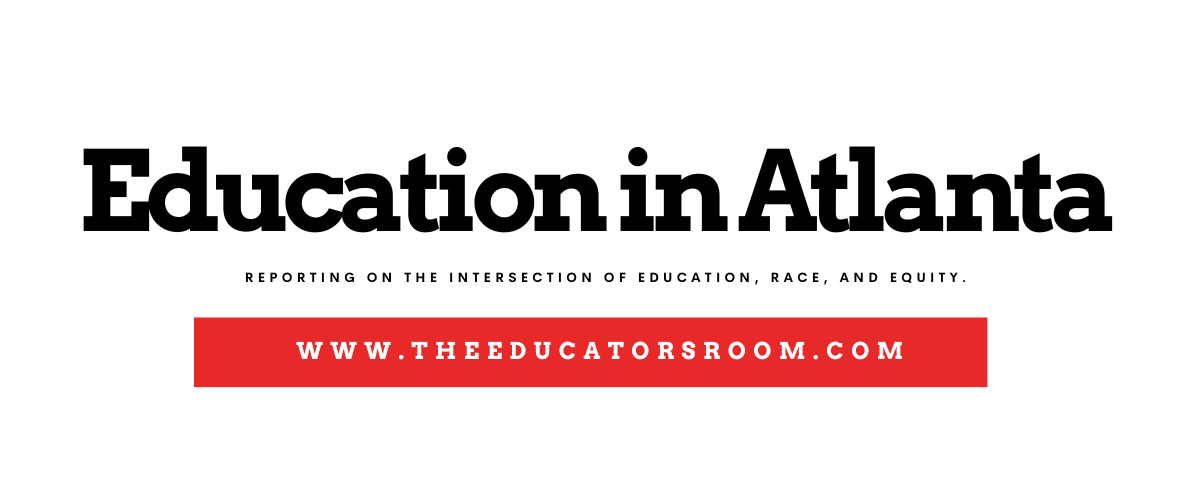As of July 1, Georgia is missing more than $222 million in federally approved funds frozen by the U.S. Department of Education, raising alarm among state leaders and school districts.
In a statement this morning, State Superintendent Richard Woods called for fiscal responsibility by releasing the already approved funds.
“I deeply believe in fiscal responsibility, which means evaluating the use of funds and seeking out efficiencies, but also means being responsible – releasing funds already approved by Congress and signed by President Trump. In Georgia, we’re getting ready to start the school year, so I call on federal funds to be released so we can ensure the success of our students.”
The withheld funds, earmarked to support summer and after-school programs for migrant students, English learners, and underserved communities, were authorized in a continuing resolution passed by Congress in March and signed into law by President Trump.
With Georgia is missing more than $223,888,870, students will suffer, according to NEA President Becky Pringle.
“Withholding billions in promised federal education funding that students need—and states had planned to use to support children in their states—is a cruel betrayal of students, especially those who rely on critical support services. Schools are already grappling with severe teacher shortages, burnout, and under-resourced classrooms, and here comes the federal government ripping resources away from public schools. It is outrageous and unconscionable.
Impoundment and Congressional Rescission
This delay of funds, known as impoundment, occurs when the executive branch withholds funds that Congress has appropriated. While the president can temporarily hold back funds, the Impoundment Control Act prohibits permanent withholding without Congressional approval. To do so legally, the administration must issue a “special message” to Congress outlining a formal request for rescission. This allows for a 45-day review period during which both chambers must approve the withholding. To date, no such message has been submitted for these K–12 education funds.
If Congress does not approve a rescission request by an administration within 45 days, the request is considered denied, and the administration must release the funds. As of the time of this posting, no special message has been sent by the current Administration to Congress regarding these four programs.
Annual practice is that, after Congress appropriates the funds, ED provides states and territories with “allocation tables” that inform them of the exact amount of funding they will receive from each federal education formula grant program. Typically, ED provides state educational agencies with the formula program allocation tables and access to draw down those funds by July 1, allowing states and districts to plan, budget, and begin spending for the upcoming school year.
Typically, by July 1 each year, the Department of Education distributes “allocation tables” to states and territories, allowing education agencies to plan budgets and begin accessing funds. The delay now jeopardizes programs scheduled for summer and early fall, with unallocated money at risk of expiring and reverting to the U.S. Treasury.
Impacted Student Programs
As of today, states have not received the allocation tables necessary for them to draw down funds for several education programs authorized under the Elementary and Secondary Education Act and available through the continuing resolution. Five of these programs include:
- Migrant Education. These funds support migratory children in reaching challenging academic standards and graduating from high school.
- Supporting Effective Instruction. These funds support increasing student achievement by improving the quality and effectiveness of educators and underserved students’ access to effective educators.
- English Language Acquisition. These funds help students learn English and meet challenging state academic standards.
- Student Support and Academic Enrichment Program. These funds support improving student academic achievement, including providing students with access to a well-rounded education, enhancing school conditions for student learning, and enhancing the use of technology.
- Nita M. Lowey 21st Century Community Learning Centers. These funds provide academic enrichment opportunities, such as literacy and other educational services, during non-school hours (e.g., through after-school or summer programs) for students and their families, particularly those in underserved and low-performing schools.
Nationwide, an estimated total of $6.2 billion in Congressionally appropriated funds across these five programs currently remains unavailable to states and territories. All states and territories are facing severe impacts, with the funds across these five programs totaling 10% or more of their overall federal K–12 funding. For 17 states and territories, the total funds are 15% or more of their overall federal K–12 funding, potentially forcing severe cuts to critical programs.
Government Accountability Office (GAO)
If the Education Department refuses to make these funds available to states and territories without Congressional approval, the Government Accountability Office (GAO) is responsible for taking action.
Starting on July 1, the GAO can investigate the effects of the withholding on states and territories, school districts, and students and report illegal impoundment to Congress. The GAO can then bring civil action against the Executive Branch for failing to obligate appropriated funds in a timely manner.
GAO is already investigating at least 39 potential violations of the Impoundment Control Act by the current Administration. The GAO is beginning to release initial findings from some of the investigations and has recently found, for example, that the Administration illegally withheld funds intended for the Institute of Museum and Library Services. If the GAO takes civil action as a result of any of these investigations, it will be a lengthy process that could eventually reach the U.S. Supreme Court.
The Trump administration is blocking nearly $7 billion in approved education funding from reaching states and school districts. A state-by-state breakdown of the funding at stake is provided below.
| State | Fiscal Year 2024 Funding | Fiscal Year 2025 Funding (as of 7/7/25) |
| Alabama | $100,392,656 | not released |
| Alaska | $47,665,907 | not released |
| Arizona | $134,262,493 | not released |
| Arkansas | $64,255,707 | not released |
| California | $927,965,332 | not released |
| Colorado | $79,619,065 | not released |
| Connecticut | $53,561,846 | not released |
| Delaware | $28,585,105 | not released |
| District of Columbia | $26,683,109 | not released |
| Florida | $398,177,922 | not released |
| Georgia | $223,888,870 | not released |
| Hawaii | $33,290,327 | not released |
| Idaho | $36,493,633 | not released |
| Illinois | $243,191,750 | not released |
| Indiana | $107,174,260 | not released |
| Iowa | $44,494,874 | not released |
| Kansas | $49,946,530 | not released |
| Kentucky | $96,495,478 | not released |
| Louisiana | $119,812,747 | not released |
| Maine | $27,630,253 | not released |
| Maryland | $110,193,772 | not released |
| Massachusetts | $107,694,933 | not released |
| Michigan | $173,716,752 | not released |
| Minnesota | $74,106,362 | not released |
| Mississippi | $71,654,231 | not released |
| Missouri | $93,962,471 | not released |
| Montana | $27,978,071 | not released |
| Nebraska | $38,149,509 | not released |
| Nevada | $61,212,651 | not released |
| New Hampshire | $27,004,029 | not released |
| New Jersey | $162,462,714 | not released |
| New Mexico | $49,847,565 | not released |
| New York | $463,833,139 | not released |
| North Carolina | $185,874,769 | not released |
| North Dakota | $26,573,545 | not released |
| Ohio | $203,510,265 | not released |
| Oklahoma | $77,827,922 | not released |
| Oregon | $80,991,681 | not released |
| Pennsylvania | $230,714,211 | not released |
| Rhode Island | $29,371,806 | not released |
| South Carolina | $94,118,605 | not released |
| South Dakota | $27,200,921 | not released |
| Tennessee | $118,985,396 | not released |
| Texas | $738,537,697 | not released |
| Utah | $40,402,965 | not released |
| Vermont | $26,125,325 | not released |
| Virginia | $123,536,510 | not released |
| Washington | $150,695,542 | not released |
| West Virginia | $32,494,457 | not released |
| Wisconsin | $80,333,097 | not released |
| Wyoming | $25,545,207 | not released |
| Total | $6,880,834,000 | ??? |

